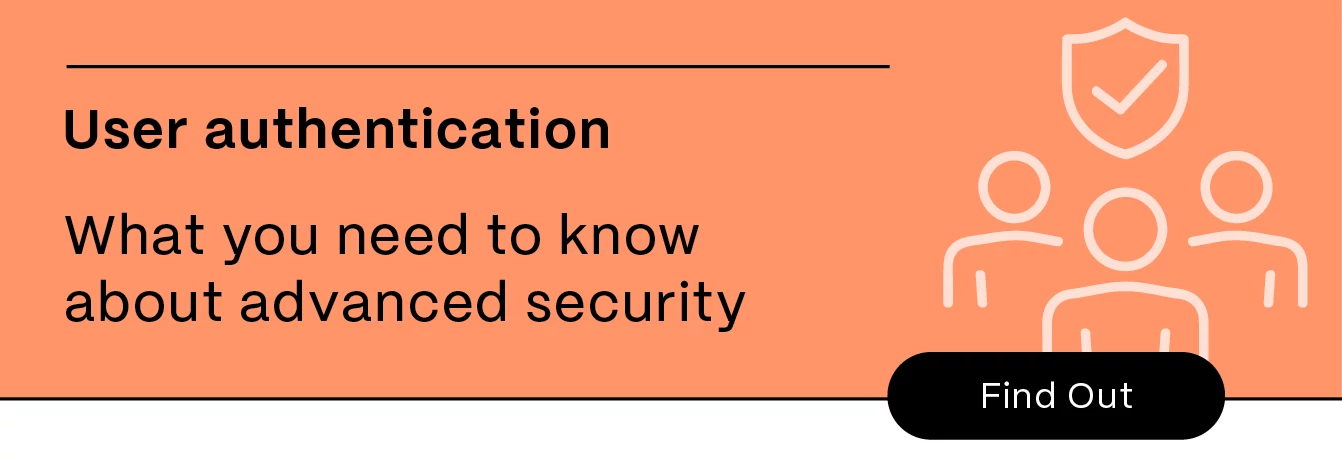
Blog
SaaS management guide: strategies and best practices

Have you ever wondered, “What does SaaS stand for?” ‘Software as a Service’ is a cloud-based software accessed through the internet, rather than installed locally. Instead of buying the software outright, you subscribe to a service for a specific period that hosts and manages the application online.
SaaS has revolutionized how businesses operate through its flexibility, scalability, and accessibility benefits. From small startups to large enterprises, organizations are increasingly relying on SaaS applications to streamline processes, boost productivity, and cut costs.
In this guide, we cover what SaaS management entails, effective strategies to optimize your SaaS stack, and best practices for streamlining SaaS applications. You will gain a clear understanding of how to harness the full potential of your SaaS investments to drive a successful and productive business.
What is SaaS management?
SaaS management is the practice of proactively managing and optimizing all cloud-based software applications within a company’s portfolio. This process involves tracking software usage, costs, licenses, and users to ensure maximum efficiency and ROI.
Gartner forecasts a 20% surge in SaaS spending to $247.2 billion in 2024. Reliance on cloud-based software is growing, making SaaS management critical for businesses to optimize costs, mitigate risks, and boost performance.
Why do businesses need a process for SaaS management?
Businesses use a wide variety of software programs to enhance operations and productivity. This abundance often leads to a complicated, costly technology stack. In fact, the average company uses 323 cloud-based applications, totaling up to $65 million spent on SaaS each year. This proliferation of tools can quickly spiral into an environment of overlapping functionalities, underutilized subscriptions, and escalating expenses.

Effective SaaS management is the key to gaining visibility into your organization's software landscape. Through strategic oversight and governance, you can control costs, enhance security, improve efficiency, and drive innovation.
Key components of SaaS management
SaaS management requires establishing clear processes, policies, and tools to guide the safe and efficient use of a businesses’ applications. From managing software licenses to monitoring user access, there are pivotal components of the practice.
Application inventory and discovery
The first step to effective SaaS management is gaining complete visibility into your organization's software landscape. This requires keeping a comprehensive inventory of all SaaS applications currently in use. Your list should include:
- Application name and description: Provide a clear understanding of each software's purpose.
- Vendor information: List contact details, contract terms, and renewal dates.
- Cost: Itemize subscription fees, additional charges, and overall spending.
- Departmental ownership: Identify who is responsible for each application.
- Number of users: Assess usage levels to identify potential optimization opportunities.
- Integration points: Understand how the application connects with other systems.
License management
License management involves tracking software licenses during its entire lifecycle, from onboarding through end date. It helps optimize software spending by tracking usage, identifying unused licenses, and aligning expenses with actual usage. Key practices include:
- Keep a centralized license repository: Maintain a comprehensive database of all software licenses, including purchase dates, expiration dates, and terms of use.
- Conduct regular audits: Conduct periodic audits to compare the number of owned licenses with the actual number of users.
- Optimize licenses: Identify opportunities to consolidate licenses, downgrade unused features, or negotiate better terms with vendors.
- Leverage automated license management tools: Utilize software solutions to streamline oversight and improve accuracy.
User access and security
Properly managing user permissions is crucial for safeguarding sensitive data within a SaaS environment. Controlling who can access specific information and the actions they can perform significantly reduces the risk of data breaches and compliance violations. This component includes:
- Using role-based access controls: Assign permissions based on job roles and responsibilities, granting the minimum permissions needed for users to perform their duties.
- Completing regular access reviews: Periodically assess user access rights and revoke unnecessary permissions.
- Implementing strong authentication methods: Utilize multi-factor authentication (MFA) to enhance security.
Related Read: What you need to know about user authentication and advanced security

Cost optimization
Uncontrolled SaaS spending can erode profit margins. Cost optimization techniques are essential to guarantee that every dollar invested in software delivers maximum value. To manage SaaS costs, organizations must:
- Centralize SaaS procurement: Establish a streamlined purchasing process to gain visibility and control over spending.
- Integrate spend management tools: Utilize software solutions to track expenses, identify cost trends, and generate detailed reports.
- Carry out regular audits: Review SaaS subscriptions at specified times to identify opportunities for cost reduction or elimination.
- Negotiate contracts: Leverage purchasing power to negotiate better deals with vendors, including discounts and extended contract terms.
5 steps to build an effective SaaS management strategy
Now that we've explored the key components of SaaS management, here is a step-by-step approach to building a comprehensive strategy. Use the following to help effectively optimize your SaaS investments and drive operational success.
1. Assess current SaaS usage
The foundation of a successful SaaS management strategy is a clear understanding of your current tech stack. This involves conducting an initial audit of all SaaS applications in use.
To build a complete picture, consider the following components:
- Application inventory: Create a detailed list of all SaaS applications used within your organization, including names, vendors, departments, and the number of users.
- Spend analysis: Calculate the total cost of ownership for each application, including subscription fees, implementation costs, and ongoing maintenance.
- Usage analysis: Assess software utilization rates to identify underused or redundant applications.
- Contract review: Examine contract terms, renewal dates, and potential negotiation opportunities.
- Security assessment: Evaluate the security posture of each application, identifying potential risks and vulnerabilities.
By gathering this information, you can establish a baseline for measuring the effectiveness of your SaaS management efforts and identify areas for improvement.
2. Set goals and objectives
With a clear roadmap of your current SaaS landscape, the next step is to define your SaaS management goals and objectives. These should align with your overall business strategy and priorities.
Consider setting goals in the following areas:
- Cost reduction: Specify target savings percentages or dollar amounts.
- Efficiency: Outline desired productivity gains or process optimization metrics.
- Risk mitigation: Define security and compliance objectives.
- Data-driven decision making: Establish goals to improve your approach to sourcing insights from data.
3. Implement SaaS management tools
SaaS management platforms are designed to streamline various aspects of SaaS optimization, from discovery and inventory to cost management and security. Successfully managing a complex SaaS environment often requires the support of specialized tools and technology.
When selecting a platform, consider the following factors:
- Functionality: Ensure the tool aligns with your specific needs.
- Integration capabilities: Verify compatibility with your existing systems.
- Scalability: Choose a platform that can accommodate your organization's growth.
- Cost: Evaluate pricing models and total cost of ownership.
- User experience: Consider the platform's ease of use and adoption.
With the right tools, you can save time, improve accuracy, and enhance decision making.
4. Establish policies and procedures
To build a consistent SaaS management process, it's essential to create guidelines governing how SaaS applications are used and managed.
A usage policy should:
- Define guidelines for acceptable use of SaaS applications.
- Outline data security and privacy requirements.
- Establish guidelines for sharing and collaboration.
- Specify procedures for reporting security incidents or unauthorized access.
Additionally, SaaS procedures for procurement and management must:
- Create a formal approval process for acquiring new SaaS applications.
- Determine criteria for evaluating SaaS vendors and solutions.
- Identify contract negotiation and management responsibilities.
- Catalog procedures for cost allocation and budgeting.
Well-defined policies and procedures help you reduce risks, improve efficiency, and verify compliance with relevant regulations.
5. Ongoing monitoring and improvement
SaaS management is an ongoing operation that requires continuous attention and adaptation. To ensure the long-term success of your strategy, it's essential to:
- Monitor usage and spending: Keep track of software utilization and costs to identify trends and potential areas for optimization.
- Review and update policies: Stay ahead of emerging threats and industry best practices by regularly reviewing and updating your SaaS policies and procedures.
- Evaluate tool performance: Assess the efficacy of your SaaS management tools and make necessary adjustments.
- Foster a culture of optimization: Encourage employees to be mindful of SaaS usage and suggest ways to save costs or enhance efficiency.
SaaS management best practices
Once you’ve built your SaaS management strategy, use the following best practices to maximize the value of your investments.
Centralize SaaS management
Consolidate subscription management under one team (e.g., the IT department) to standardize processes, reduce costs, and enhance data protection. This approach empowers teams to control user access, optimize usage, and negotiate better deals with vendors.
Regularly review and rationalize SaaS apps
The dedicated team must continually monitor application usage to optimize licensing, identify underperforming software, and assess employee satisfaction. Analyzing and understanding this data lets you make informed decisions about software investments and training needs.
Encourage cross-department collaboration
Make sure representatives from various departments are involved in the SaaS decision-making process. Diverse perspectives help identify opportunities for optimization. This collaborative approach fosters a shared sense of ownership and accountability, leading to stronger decision making and improved outcomes.
Educate and train employees
Investing in employee training is fundamental to SaaS management. When employees have the knowledge and skills to use SaaS applications efficiently and securely, its value is maximized and risks are minimized. Comprehensive training programs enhance user adoption, reduce support costs, and foster a culture of innovation.
Improve how your business manages its SaaS
SaaS applications are essential for businesses to thrive. However, the rapid increase in software used can quickly lead to rising costs, security risks, and operational inefficiencies. Effective SaaS management is crucial for mitigating these challenges.
Be sure to regularly review your software portfolio, focusing on cost optimization and security. SaaS management is an ongoing journey — one that should be continuously evaluated and refined. Revisit this framework and guide to help you unlock the full potential of your software investments and achieve your business goals.
Related Resources

Blog